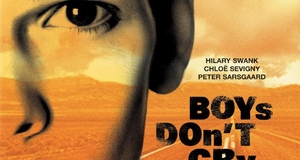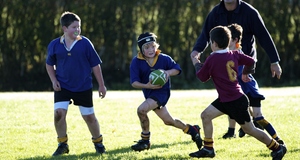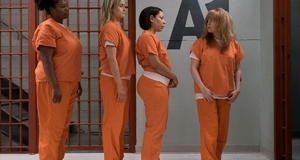Challenging Stereotypes in Glee, or Not? Exploring Masculinity and Neoliberal Flexibility
By
2013, Vol. 5 No. 02 | pg. 2/2 | « Blaine does not represent a third way, however, because just as Kurt can be understood as a “feminine” character, Blaine functions as his masculine counterpart and protector. There is a separation between actual sexual activity and the way in which a character (or a real-life person) is read and treated. Although Blaine is attracted to men, he is still able to “do heterosexuality,” that is, to act in ways that conform to his perceived sex and gender so that he can assume a straight male identity.16 In a study of gay Australian men, R.W. Connell found that “men who have sex with men are generally oppressed, but they are not definitively excluded from masculinity”17; in her study of hegemonic femininity, Mimi Schippers stated that gay men can “claim their status as ‘real men’” if they contrast themselves in relation to feminine men around them.18 Kurt is feminized, and so to make sense of Blaine – especially once the two characters begin dating – Blaine is made to fill the “manly” role. This maintains the masculine/feminine binary within their relationship. In one episode, for example, Kurt tells his friends how much he has missed them since transferring to another high school to escape Karovosky’s bullying. When they ask Kurt to come back, Blaine says protectively, “I told him I’d be all for it if it wasn’t for Karovsky,” and then he asserts, “Kurt needs to be safe.”19Blaine is naturalized by acting as a “straight” foil to Kurt’s femininity; however, the remaining minority characters are not allowed to escape from their ‘other’-ness and remain defined by their divergence from societal norms. The ‘normal’ characters on the show have all sorts of plots and personal histories, but the minority characters (Mercedes, who is fat and black, Zizes, who is fat and unfeminine, Mike and Tina, who are Asian and Artie, who is disabled) are one-dimensional. Whether Zises teaches her boyfriend Puck to be more sensitive to her weight or Artie’s disability is highlighted to make his friends more grateful for their own ‘abled’ bodies,20 the minority characters’ plots serve only to further the character development of the ‘normal’ people around them. Occasionally one of these choir members will protest that Rachel is hogging the spotlight – in one episode, Rachel insists she must sing the closing number at a benefit the club is planning. Mercedes retaliates by asking for all kinds of ridiculous accommodations (multiple humidifiers, puppies on which she can dry her hands after washing them, etc.), as if there were no middle ground between doormat and despot, and then when her demands are not met on the night of the show, she refuses to perform. Rachel tries to convince her to sing, and Mercedes asks her, “Why are you a bigger star than me? You always get the big solos, the best songs, the moments in the sun. Why is it never me?” Instead of acknowledging that perhaps, Mercedes’ divergence from conventional beauty standards (her fatness and blackness) might play a part, the show – through Rachel – explains that she, Mercedes, is to blame for her own marginalization. After Rachel admits that both singers are equally talented, Mercedes tells her, “Yeah, and everyone actually likes me,” to which Rachel replies, “That’s your problem … there’s nothing that I wouldn’t do for the chance to be in the spotlight.” She then tells her – as if Mercedes hadn’t already asked for it unsuccessfully – “If you want that closing spot, than go in there and take it from me.”21 Mercedes is featured to teach us this now, so that next episode, we won’t see a problem with her relegation to the background while Rachel sings a solo. Glee may pat itself on the back for its roster of minority characters, but the show both reflects and perpetuates the ideologies behind our society’s systems of privilege and oppression. Co-creator Brad Fulchuk has said, “Our idea was always to use the stereotypes as starting points — something to make the audience instantly relate to the characters.”22 Unfortunately, the show has not shaken its foundations, but instead, by building upon them, it has made them stronger. Glee masquerades as a progressive show, but in fact it reinscribes characters that stray from the norm back into binary systems and cinematically reproduces dominant power structures in our society. This is problematic, as Alan Johnson says, in that “such ideas are powerful because we use them to construct a sense of who we and other people are.”23 Young people watching the show – straight white boys, especially – are taught to be more ‘tolerant’ of those who are ‘different,’ but the show confines these characters to static stereotypes lacking independent identities or agency. Unfortunately, by building upon conventional understandings of gender, sex and sexuality, Glee ultimately perpetuates advantaging and oppressive systems instead of challenging the ideologies behind them. References“About the Show,” Glee, http://www.fox.com/glee/about. Connell, R. W. “A Very Straight Gay: Masculinity, Homosexual Experience, and the Dynamics of Gender.” American Sociological Review. Vol. 57, No. 6 (Dec., 1992). 735-751. Johnson, Allan G. “Patriarchy, the System: An It, Not a He, a Them, or an Us.” Reconstructing Gender: A Multicultural Anthology. 5th ed. Ed. Estelle Disch. New York, NY: McGraw-Hill, 1997. 98-106. Kimmel, Michael S. “Masculinity as Homophobia.” Feminist Frontiers. Ed. Verta A. Taylor, Nancy Whittier, and Leila J. Rupp. Boston: McGraw-Hill, 2007. 149-155. Lorber, Judith. "'Night to His Day': The Social Construction of Gender." Feminist Frontiers. Ed. Verta A. Taylor, Nancy Whittier, and Leila J. Rupp. Boston: McGraw-Hill, 2007. 112-119. Messner, Michael A. “Becoming 100% Straight.” Feminist Frontiers. Ed. Verta A. Taylor, Nancy Whittier, and Leila J. Rupp. Boston: McGraw-Hill, 2007. 341-345. Messner, Michael A. “Boyhood, Organized Sports, and the Construction of Masculinities.” Reconstructing Gender: A Multicultural Anthology. 5th ed. Ed. Estelle Disch. New York, NY: McGraw-Hill, 1997. 119-136. McRuer, Robert. Crip Theory: Cultural Signs of Queerness and Disability. New York: New York University Press, 2006. Schippers, Mimi. “Recovering the Feminine Other: Masculinity, Femininity, and Gender Hegemony.” Theory and Society. Vol. 36, No. 1 (Feb., 2007). 85-102. Silver, Curtis. “We’re All Gleeks — 10 Questions for Glee Co-Creator Brad Falchuk.” GeekDad. December 7 2009. http://www.wired.com/geekdad/2009/12/were-all-gleeks-10-questions-with-glee-co-creator-brad-falchuk. 1.) According to the show’s website, Glee is currently the top entertainment series among teenagers and a Top 3 series for Adults 18-49 and 18-34. The show has garnered two Grammy Award nominations, 19 Emmy and Golden Globe nominations and four Emmy awards. The cast has made Platinum and two Gold albums, received two Grammy award nominations and sold more than 16 million song downloads. “About the Show,” Glee, http://www.fox.com/glee/about. 2.) “Born This Way,” Glee: Season 2, Dir. Alfonso Gomez-Rejon, Writ. Brad Falchuk, Fox, Broadcast April 26, 2011. 3.) In the episode “Born this Way,” the glee club sings the hit song by Lady Gaga that the episode is named after while wearing T-shirts on which they’ve printed “a word or a phrase that best describes the thing about you that you’re the most ashamed of, or you’d like to change, but you can’t, because you were born that way.” Kurt’s shirt says ‘LIKES BOYS.’ 4.) “Preggers,” Glee: Season 1, Dir. Brad Falchuk, Writ. Brad Falchuk, Fox, Broadcast Sept. 23 2009. 5.) Allan G. Johnson, “Patriarchy, the System: An It, Not a He, a Them, or an Us,” Reconstructing Gender: A Multicultural Anthology, 5th edition, Ed. Estelle Disch (New York, NY: McGraw-Hill, 1997) 98-106. 6.) Judith Lorber, “‘Night to His Day’: The Social Construction of Gender,” Feminist Frontiers, Ed. Verta A. Taylor, Nancy Whittier, and Leila J. Rupp (Boston: McGraw-Hill, 2007) 112-119. 7.) Michael S. Kimmel, “Masculinity as Homophobia,” Feminist Frontiers, Ed. Verta A. Taylor, Nancy Whittier, and Leila J. Rupp (Boston: McGraw-Hill, 2007), 149. 8.) “The Sue Sylvester Shuffle,” Glee: Season 2, Dir. Brad Falchuk, Writ. Ian Brennan, Fox, Broadcast Feb. 6, 2011. 9.) As “all boys are, to a greater or lesser extent, judged according to their ability, or lack of ability, in competitive sports,” it makes sense that the other, masculine men play football but Kurt has no interest in athletics. Michael A. Messner, “Boyhood, Organized Sports, and the Construction of Masculinities,” Reconstructing Gender: A Multicultural Anthology, 5th ed, Ed. Estelle Disch (New York, NY: McGraw-Hill, 1997) 121. 10.) All of the female figures are referred to by their first names except for “Zizes” and “Beiste”; the other characters whose last names are used, Mr. Shuester (William Shuester), “Puck” (Noah Puckerman) and “Karovsky” (David Karovsky), are all male. 11.) Robert McRuer, Crip Theory: Cultural Signs of Queerness and Disability (New York: New York University Press, 2006) 18. 12.) “Furt,” Glee: Season 2, Dir. Carol Banker, Writ. Ryan Murphy, Fox, Broadcast Nov. 23, 2010. 13.) McRuer 174. 14.) McRuer 175. 15.) “The Sue Sylvester Shuffle,” Glee: Season 2, Dir. Brad Falchuk, Writ. Ian Brennan, Fox, Broadcast Feb. 6, 2011. 16.) Michael A. Messner, “Becoming 100% Straight,” Feminist Frontiers, Ed. Verta A. Taylor, Nancy Whittier, and Leila J. Rupp (Boston: McGraw-Hill, 2007) 341-345. 17.) R.W. Connell, “A Very Straight Gay: Masculinity, Homosexual Experience, and the Dynamics of Gender,” American Sociological Review, Vol. 57, No. 6 (Dec., 1992), 737. 18.) Mimi Schippers, “Recovering the Feminine Other: Masculinity, Femininity, and Gender Hegemony, “ Theory and Society, Vol. 36, No. 1 (Feb., 2007), 96. 19.) “Born This Way,” Glee: Season 2, Dir. Alfonso Gomez-Rejon, Writ. Brad Falchuk, Fox, Broadcast April 26, 2011. 20.) Oftentimes Glee will dedicate an episode to a minority character so that their difference can be highlighted (and, perhaps, contained). The episode about Artie was titled “Wheels.” 21.) “Night of Neglect,” Glee: Season 2, Dir. Carol Banker, Writ. Ian Brennan, Fox, Broadcast April 19, 2011. 22.) Curtis Silver, “We’re All Gleeks — 10 Questions for Glee Co-Creator Brad Falchuk,” GeekDad, December 7 2009, http://www.wired.com/geekdad/2009/12/were-all-gleeks-10-questions-with-glee-co-creator-brad-falchuk. 23.) Johnson 104. Suggested Reading from Inquiries Journal
Inquiries Journal provides undergraduate and graduate students around the world a platform for the wide dissemination of academic work over a range of core disciplines. Representing the work of students from hundreds of institutions around the globe, Inquiries Journal's large database of academic articles is completely free. Learn more | Blog | Submit Latest in Film & Media |
















